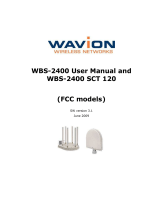
Konftel IP DECT 10 User Guide
Proprietary and Confidential
Chapter: About This Document
4.9 Country .................................................................................................................................................. 37
4.10 Security ................................................................................................................................................ 38
4.11 Central Directory and LDAP ................................................................................................................. 40
4.12 Statistics ............................................................................................................................................... 43
4.13 Settings – Configuration File Setup ..................................................................................................... 46
4.14 Sys log .................................................................................................................................................. 46
4.15 SIP Logs ................................................................................................................................................ 47
5 Firmware Upgrade Procedure ................................................................................................................. 48
5.1 Network Dimensioning .......................................................................................................................... 48
5.2 TFTP Configuration ................................................................................................................................ 48
5.3 Create Firmware Directories ................................................................................................................. 49
5.4 Firmware Update Settings ..................................................................................................................... 50
5.5 Base Station Firmware Upgrade ............................................................................................................ 51
6 Functionality Overview ............................................................................................................................ 53
6.1 Base Station Interfaces .......................................................................................................................... 53
6.2 Software Features ................................................................................................................................. 54
6.3 Call Features .......................................................................................................................................... 55
Appendix .......................................................................................................................................................... 57
7 Appendix A: Basic Network Server(s) Configuration ............................................................................... 57
7.1 Server setup ........................................................................................................................................... 57
7.2 Requirements ........................................................................................................................................ 57
7.3 DNS Server Installation/Setup ............................................................................................................... 57
7.4 DHCP Server Setup ................................................................................................................................ 57
7.5 TFTP Server Setup .................................................................................................................................. 59
7.6 SIP Server Setup ..................................................................................................................................... 60
8 Appendix B: Using Base with VLAN Network .......................................................................................... 63
8.1 Introduction ........................................................................................................................................... 63
8.2 Backbone/ VLAN Aware Switches ......................................................................................................... 64
8.3 How VLAN Switch Work: VLAN Tagging ................................................................................................ 65
8.4 Implementation Cases ........................................................................................................................... 65
8.5 Base station Setup ................................................................................................................................. 66
8.6 Configure Time Server ........................................................................................................................... 66
8.7 VLAN Setup: Base station ...................................................................................................................... 67
9 Appendix C: Local Central directory file handling ................................................................................... 68
9.1 Central Directory Contact List Structure ............................................................................................... 68
9.2 Central Directory Contact List Filename Format ................................................................................... 68




















